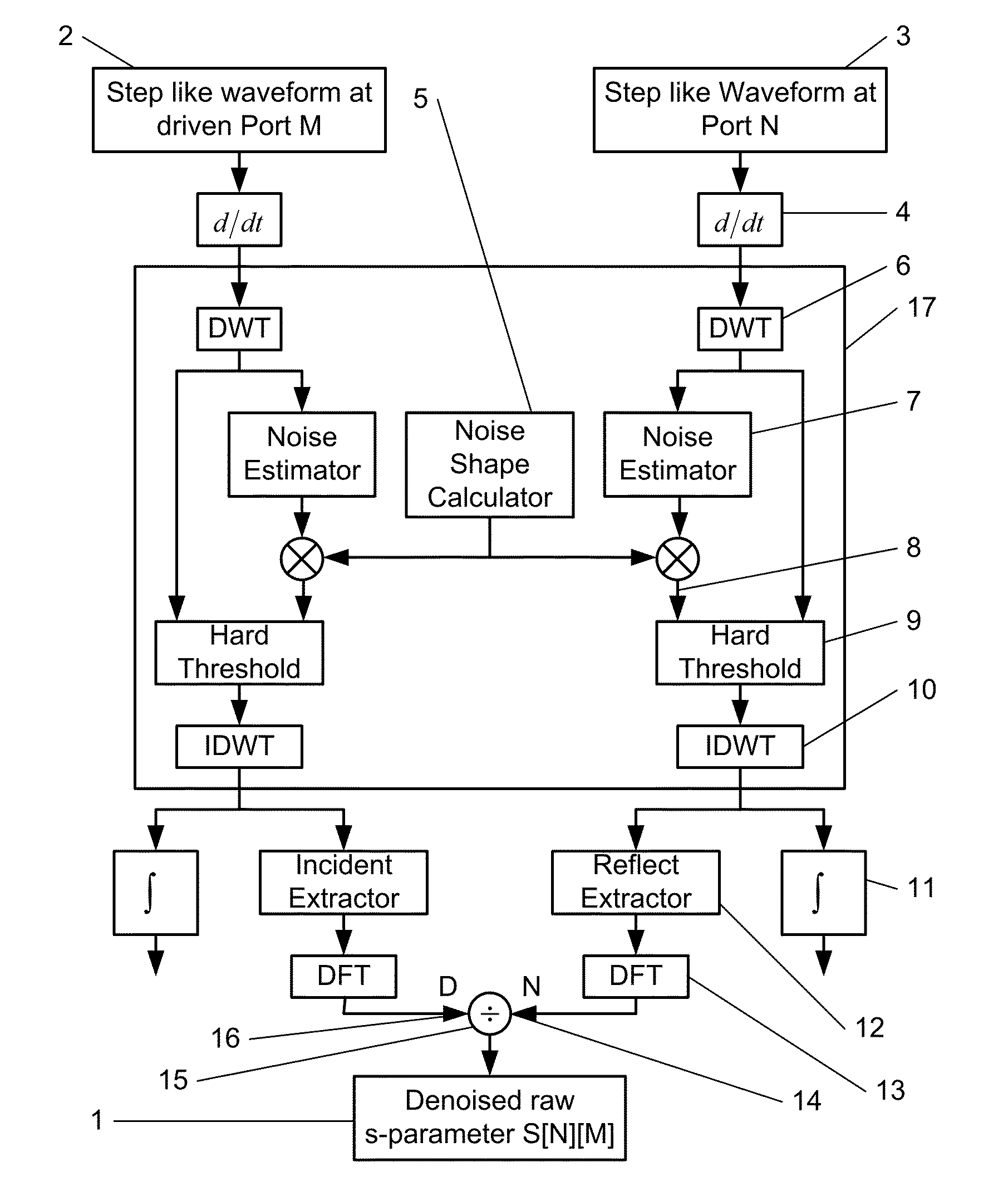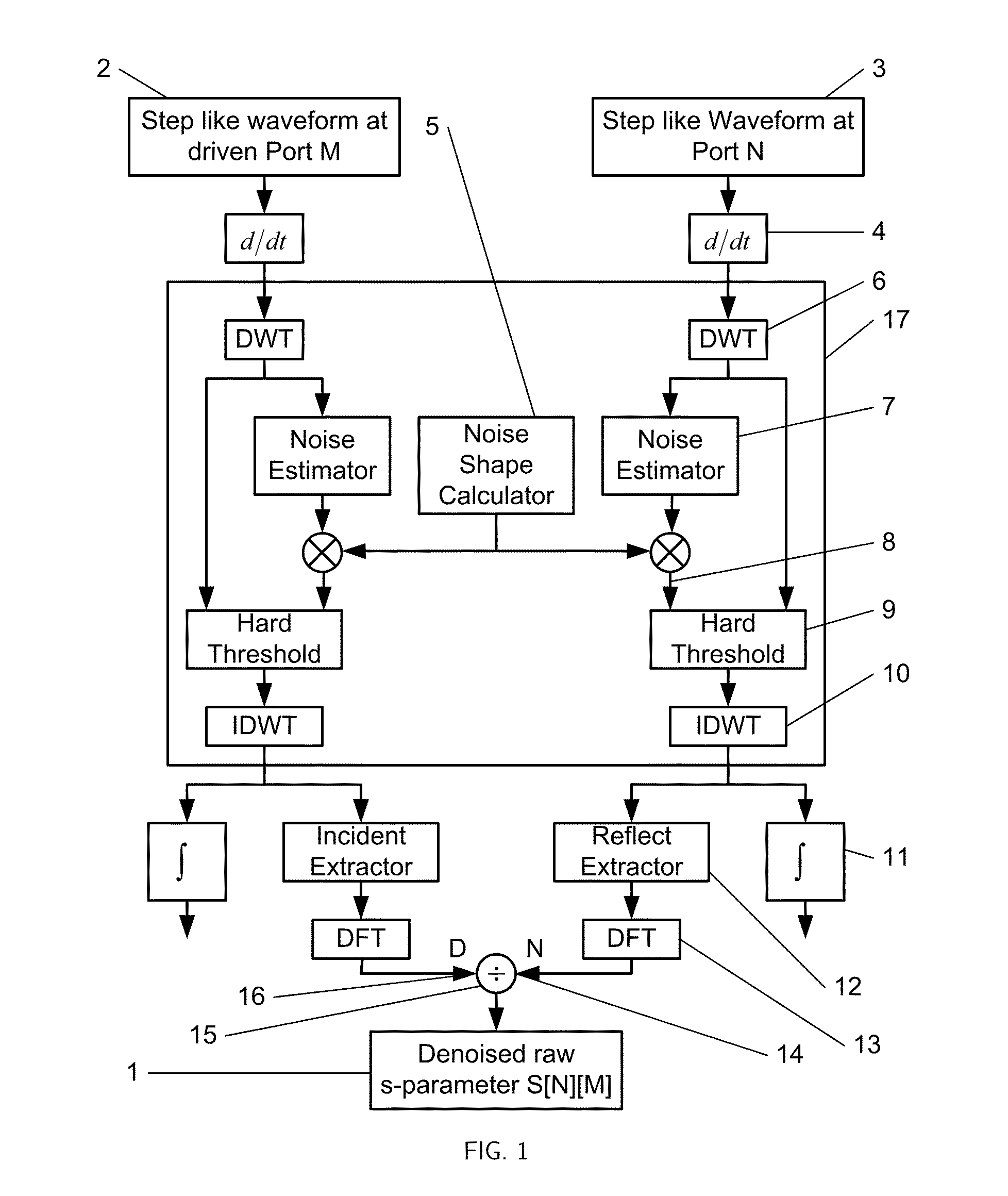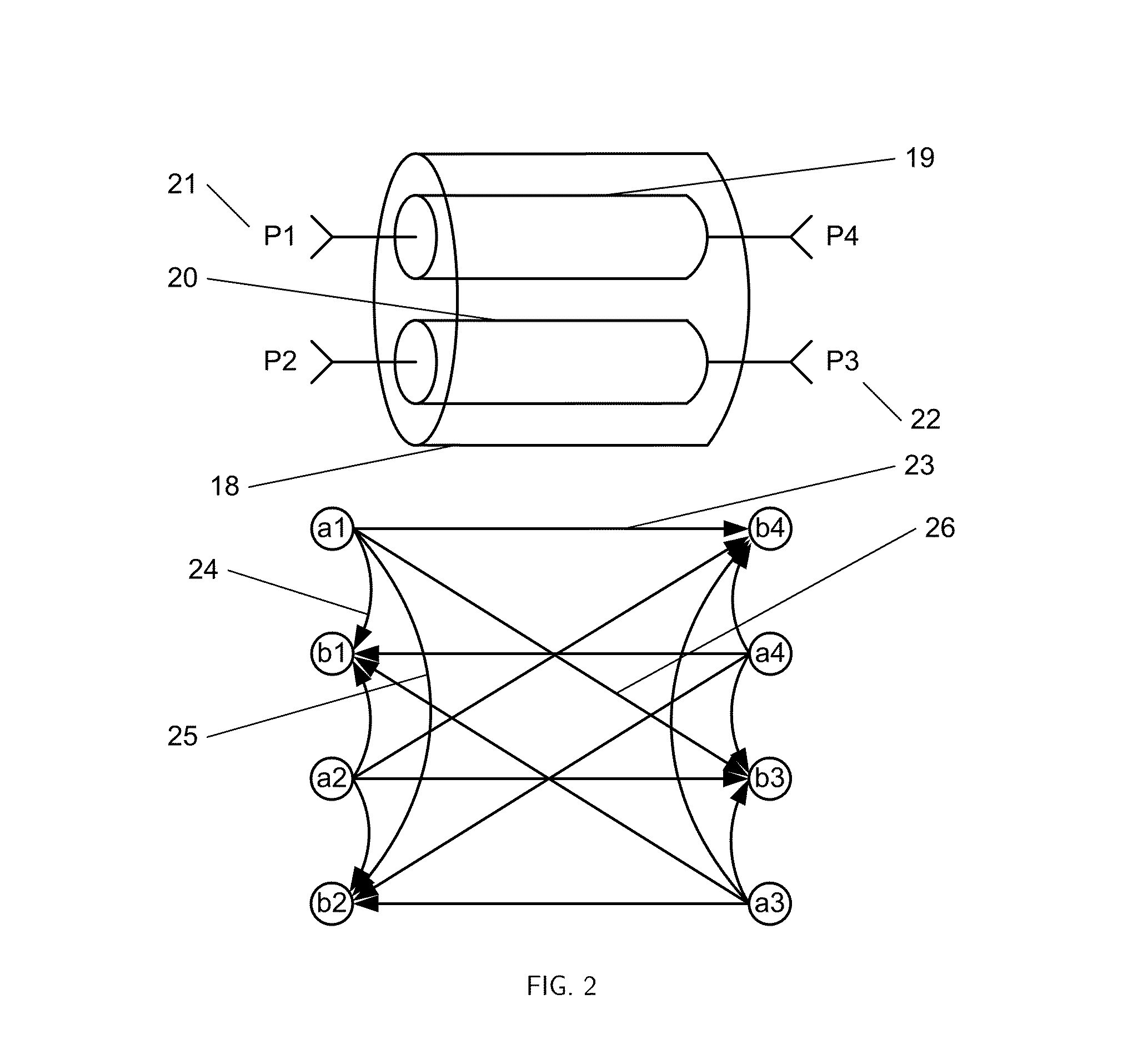Wavelet denoising for time-domain network analysis
a network analysis and wavelet denoising technology, applied in the field of network analysis instruments, can solve problems such as considerable noise, and achieve the effect of high dynamic rang
- Summary
- Abstract
- Description
- Claims
- Application Information
AI Technical Summary
Benefits of technology
Problems solved by technology
Method used
Image
Examples
Embodiment Construction
[0049]A detailed description of the invention will now be provided, making reference to the following drawings in which like reference numbers designate similar structure or steps.
[0050]In accordance with the invention, it can be shown that an expression for dynamic range in a time domain network analysis instrument is expressed as:
[0051]SNRn=10·Log(A2·Fseq·avgTa·f2)-NdBm-C(f)+P(f)-6(1)
[0052]In equation (1), A is the amplitude of an incident step waveform in Volts, Fseq is the equivalent time sample rate in samples per second, avg is the number of averages taken, Ta is the length of the waveform in seconds, f is the frequency in Hertz, NdBm is the power of the assumed white noise in decibels relative to 1 mW delivered to a 50 Ohm load (dBm), C(f) is the attenuation of the cabling in dB as a function of frequency and P(f) is the response of the puller in dB as a function of frequency and is computed as the frequency content in the derivative of the step waveform. The dynamic range ...
PUM
 Login to View More
Login to View More Abstract
Description
Claims
Application Information
 Login to View More
Login to View More - R&D
- Intellectual Property
- Life Sciences
- Materials
- Tech Scout
- Unparalleled Data Quality
- Higher Quality Content
- 60% Fewer Hallucinations
Browse by: Latest US Patents, China's latest patents, Technical Efficacy Thesaurus, Application Domain, Technology Topic, Popular Technical Reports.
© 2025 PatSnap. All rights reserved.Legal|Privacy policy|Modern Slavery Act Transparency Statement|Sitemap|About US| Contact US: help@patsnap.com



